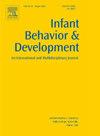The utility of multiple assessments in infancy and toddlerhood to predict middle childhood ADHD symptoms: Temperamental, behavioral, and genetic contributions
IF 1.9
3区 心理学
Q3 PSYCHOLOGY, DEVELOPMENTAL
引用次数: 0
Abstract
Background
Early intervention is effective for reducing ADHD symptoms and related impairments, yet methods of identifying young children in need of services are lacking. Most early predictors of ADHD previously identified are of limited clinical utility. This study examines several theoretically relevant predictors of ADHD in infancy and toddlerhood and whether assessment at multiple time points improves prediction. We also examine whether links between early risk factors and middle childhood ADHD are driven by shared genetic and/or environmental mechanisms to identify potential early intervention targets.
Method
614 twins (52.12 % female, 58.50 % non-Hispanic White) participated in a larger study on genetic and environmental contributions to mental health outcomes. Caregiver-reported attention and behavior problems in infancy (M = 12.67 months) and toddlerhood (M = 32.18 months) and caregiver-reported temperament (attentional focusing, impulsivity, inhibitory control) in toddlerhood were used to predict caregiver-reported ADHD symptoms in middle childhood (M = 8.78 years).
Results
Only behavior problems in infancy and toddlerhood were robust predictors of caregiver-reported ADHD symptoms in middle childhood. Using multiple timepoints did not improve predictive ability. The relationship between infant behavior problems and caregiver reported middle childhood ADHD symptoms was explained by both environmental and genetic influences, whereas environmental influences almost entirely explained the relationship between toddler behavior problems and caregiver-reported middle childhood ADHD symptoms.
Implications
Behavior problems in toddlerhood showed the strongest predictive utility, and links to later ADHD were largely driven by environmental factors, suggesting that psychosocial interventions modifying the child’s environment may be particularly effective for reducing ADHD risk.
婴儿期和学步期多重评估预测儿童中期ADHD症状的效用:气质、行为和遗传贡献。
背景:早期干预对于减少ADHD症状和相关损伤是有效的,但是缺乏识别需要服务的幼儿的方法。大多数先前确定的ADHD早期预测指标的临床应用有限。本研究探讨了婴儿期和学步期ADHD的几个理论相关预测因素,以及多个时间点的评估是否能提高预测。我们还研究了早期风险因素和中期儿童多动症之间的联系是否由共同的遗传和/或环境机制驱动,以确定潜在的早期干预目标。方法:614对双胞胎(52.12 %为女性,58.50 %为非西班牙裔白人)参与了一项关于遗传和环境对心理健康结果影响的大型研究。幼儿期(M = 12.67个月)和幼儿期(M = 32.18个月)照料者报告的注意力和行为问题以及幼儿期照料者报告的气质(注意集中、冲动、抑制控制)被用来预测幼儿中期(M = 8.78岁)照料者报告的ADHD症状。结果:只有婴儿期和幼儿期的行为问题是照料者报告的儿童中期ADHD症状的可靠预测因子。使用多个时间点并不能提高预测能力。婴儿行为问题和照顾者报告的儿童中期ADHD症状之间的关系可以用环境和遗传影响来解释,而环境影响几乎完全解释了幼儿行为问题和照顾者报告的儿童中期ADHD症状之间的关系。提示:幼儿期的行为问题表现出最强的预测效用,并且与后来的ADHD的联系在很大程度上是由环境因素驱动的,这表明改变儿童环境的社会心理干预可能对降低ADHD风险特别有效。
本文章由计算机程序翻译,如有差异,请以英文原文为准。
求助全文
约1分钟内获得全文
求助全文
来源期刊

Infant Behavior & Development
PSYCHOLOGY, DEVELOPMENTAL-
CiteScore
4.10
自引率
4.80%
发文量
94
期刊介绍:
Infant Behavior & Development publishes empirical (fundamental and clinical), theoretical, methodological and review papers. Brief reports dealing with behavioral development during infancy (up to 3 years) will also be considered. Papers of an inter- and multidisciplinary nature, for example neuroscience, non-linear dynamics and modelling approaches, are particularly encouraged. Areas covered by the journal include cognitive development, emotional development, perception, perception-action coupling, motor development and socialisation.
 求助内容:
求助内容: 应助结果提醒方式:
应助结果提醒方式:


